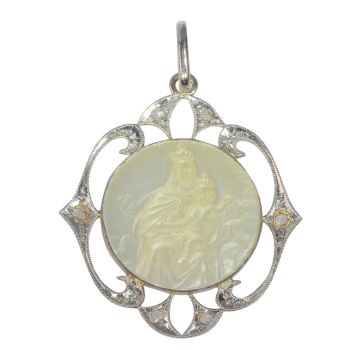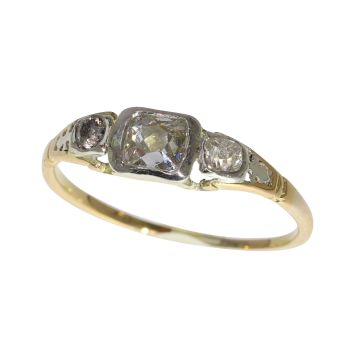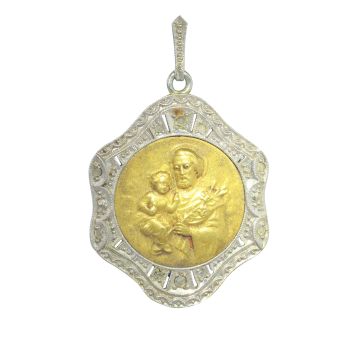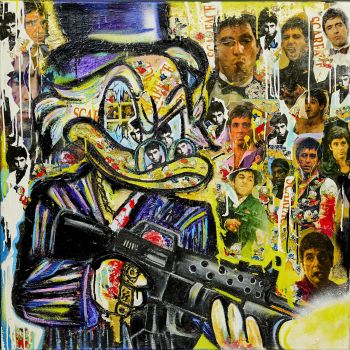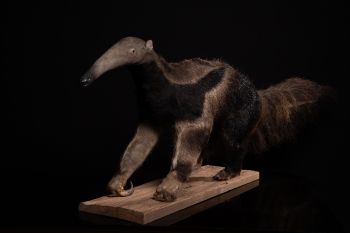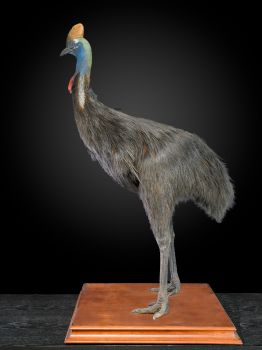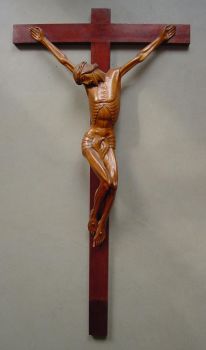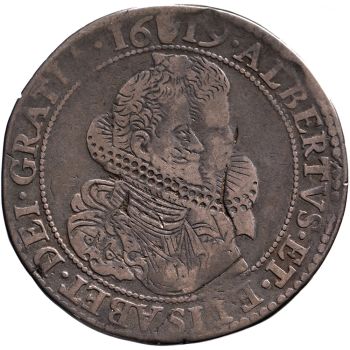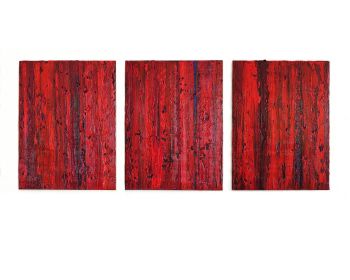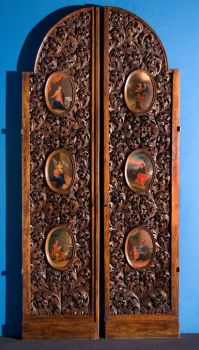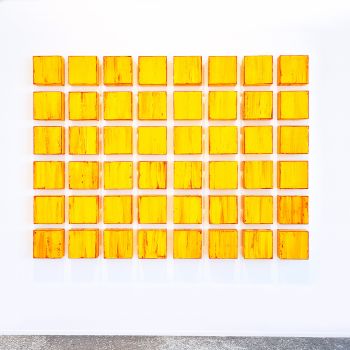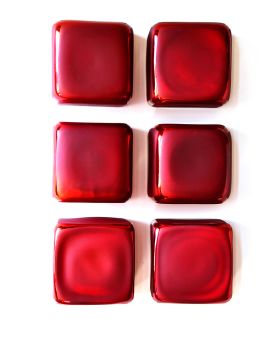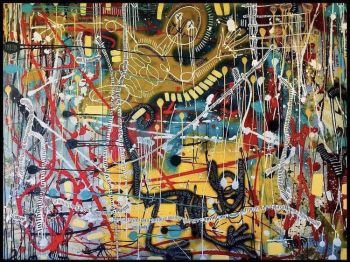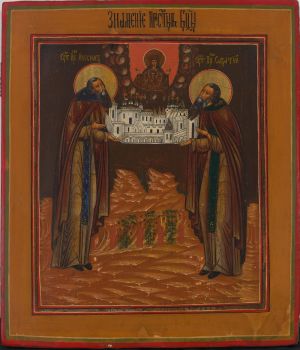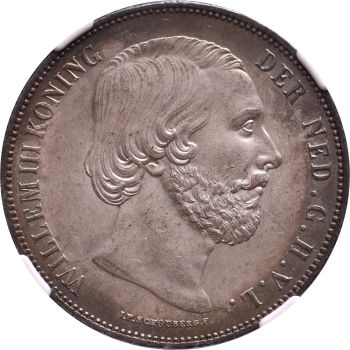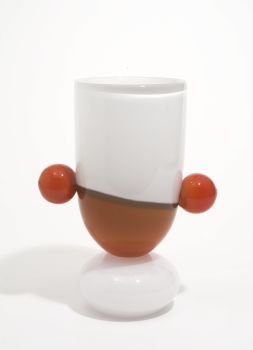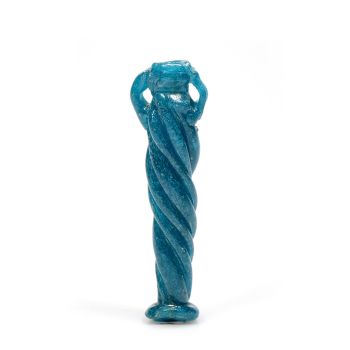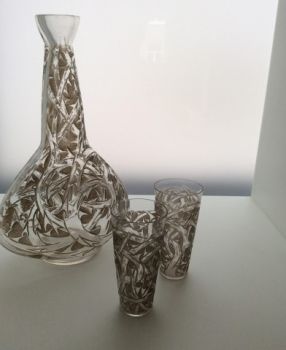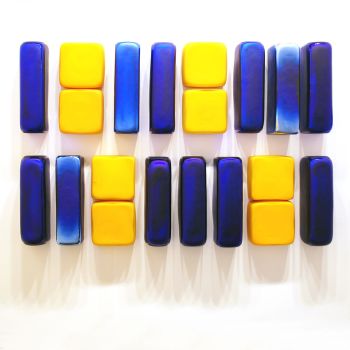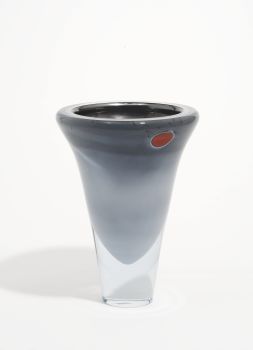AN EXCEPTIONAL AND EXTREMELY RARE VICTORIAN GILT-WOOD FIRE SCREEN WITH TAXIDERMY HUMMINGBIRDS 1875
Artista Desconocido
Vidrio
130 ⨯ 140 cm
Precio a consultar
Zebregs & Röell - Fine Art - Antiques
- Sobre la obra de arteAN EXCEPTIONAL AND EXTREMELY RARE VICTORIAN GILT-WOOD FIRE SCREEN WITH TAXIDERMY HUMMINGBIRDS BY AND LABELLED FOR HENRY WARD (1812-1878)
England, third quarter 19th century
On two scrolling foliate feet with casters, above which a rectangular two-side glazed frame, with on top a two-sided shield with initials crowned by a royal coronet on a pillow, the vividly colored hummingbirds, amongst which Anna’s hummingbird (Calypte anna), Lucifer hummingbird (Calothorax lucifer), Ruby-throated hummingbirds (Archilochus colubris), Bumble-bee hummingbirds (Atthis heloisa), Sword-billed hummingbird (Ensifera ensifera), Little hermits (Phaethornis longuemareus), Woodnymphs (Thalurania), the Marvellous spatuletail (Loddigesia mirabilis) and many others, perched, highly naturalistic, on branches with nests sprouting from the foliate bottom.
H. 130 x W. 140 cm
Provenance:
Noble collection, United Kingdom
Note:
This fire screen, that was placed in front of the fireplace when the fire was out, can be regarded as one of the most important pieces of Victorian taxidermy, and quite probably one of the pinnacles of Henry Ward’s oeuvre, still in private hands today. What makes it even more special is the iridescence of feathers of the ‘gems of the jungle’ still present, which means this screen has been preserved well, for colours of feathers often fade in daylight.
Henry Ward is the founding father of the Ward lineage, that started the privately-owned taxidermy hype in Victorian England. As a young man, Henry Ward (1812-78) was employed as a taxidermist by the legendary American naturalist and bird painter John Audubon, whom he accompanied on several of his expeditions. They probably met whilst the latter was visiting England in 1931 and returned to America together. How long Ward remained in America is not known, but he is listed in trade directories as a taxidermist at his London address (2, Vere Street) from 1857 until his death in 1878. His most common trade label is very small and is situated inside his cases. The 'late Williams' refers to the fact that Ward worked for T.M.Williams of Oxford Street. He is described on one label as the 'chief artist in taxidermy to the late T. M. Williams'. Ward did not take over Williams' premises. Cases bearing Henry Ward's own label, were probably produced between 1857 and 1878. Rowland Ward tells us that he derived considerable profit from his father's knowledge and experience during the ten years he worked with him. At the time of his death, Henry Ward was still at 2, Vere Street, although by then he also owned 5, Vere Street. - Sobre el artista
Puede suceder que un artista o creador sea desconocido.
Algunas obras no deben determinarse por quién está hecho o por (un grupo de) artesanos. Algunos ejemplos son estatuas de la Antigüedad, muebles, espejos o firmas que no son claras o legibles, pero también algunas obras no están firmadas en absoluto.
También puedes encontrar la siguiente descripción:
•"Atribuido a …." En su opinión, probablemente una obra del artista, al menos en parte.
•“Estudio de….” o “Taller de” En su opinión, una obra ejecutada en el estudio o taller del artista, posiblemente bajo su supervisión
•“Círculo de…” En su opinión, una obra del período del artista que muestra su influencia, estrechamente asociado con el artista pero no necesariamente su alumno.
•"Estilo de …." o “Seguidor de…”. En su opinión, una obra ejecutada al estilo del artista pero no necesariamente por un alumno; puede ser contemporáneo o casi contemporáneo
•"Manera de …." En su opinión una obra al estilo del artista pero de fecha posterior
•"Después …." En su opinión, una copia (de cualquier fecha) de una obra del artista
•“Firmado…”, “Fechado…” o “Inscrito” En su opinión, la obra ha sido firmada/fechada/inscrita por el artista. La adición de un signo de interrogación indica un elemento de duda.
•“Con firma…”, “Con fecha…”, “Con inscripción…” o “Lleva firma/fecha/inscripción” en su opinión la firma/fecha/inscripción ha sido añadida por alguien que no es el artista
¿Está interesado en comprar esta obra de arte?
Artwork details
Related artworks
- 1 - 4 / 12
- 1 - 4 / 24
Artista Desconocido
Pair of 19th C French Taxidermy Dioramas1860 - 1890
Precio a consultarSpectandum Gallery
Artista Desconocido
RARE TAXIDERMY OF AN ADULT SOUTHERN CASSOWARY-CASUARIUS CASUARIUS1990 - 2000
Precio a consultarSpectandum Gallery
Artista Desconocido
A white jade ‘Lotus Seedpod and Bug’ carving, Qing dynasty, 18th century18th century
Precio a consultarMenken Works of Art
1 - 4 / 24Artista Desconocido
Un cáliz de monedas inglés-holandés1738
Precio a consultarPeter Korf de Gidts - Antiquairs
Artista Desconocido
Vaso Cristallo façon de Venise1600 - 1650
Precio a consultarPeter Korf de Gidts - Antiquairs
Gyrinus
Vidrio grabado punteado con putti1764 - 1766
Precio a consultarPeter Korf de Gidts - Antiquairs
Rene Rietmeyer
"Venezia and Murano September 2007"2007
Precio a consultarEuropean Cultural Centre Collection
1 - 4 / 24Artista Desconocido
A superb Indonesian royal gem-set gold overlaid silver betel box19th century
Precio a consultarZebregs & Röell - Fine Art - Antiques
 curada por
curada porDanny Bree
Artista Desconocido
PAREJA DE ANTORCHAS O VELAS DE TECA DORADA Y LACADA INDONESIA18th century
Precio a consultarZebregs & Röell - Fine Art - Antiques
1 - 4 / 12





